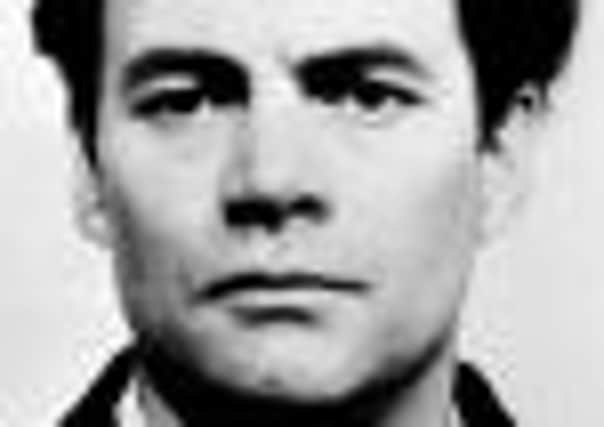Ailing Black Panther Donald Neilson ‘wanted to die’


The 75-year-old, known as the Black Panther following his 1970s murder spree, had been diagnosed with the irreversible muscle-wasting condition motor neurone disease two years before his death last year.
He died on December 18 after being transferred from Norwich Prison to the Norfolk and Norwich Hospital, suffering from a chest infection and pneumonia.
Advertisement
Hide AdAdvertisement
Hide AdNorfolk Coroner William Armstrong said Neilson’s family had been informed of the inquest at Norwich Coroner’s Court today but chose to stay away.
Relatives did not visit him in jail, although after the inquest it emerged that his daughter, Kathryn, had sent prison staff a card thanking them for the care they provided.
The inquest heard Neilson had been a “challenging and unco-operative” patient who had asked medics not to resuscitate him should he suffer a cardiac arrest.
Mr Armstrong said: “At the time of his death he struggled to do even the most basic things and was virtually dependent on other people.”
Advertisement
Hide AdAdvertisement
Hide AdA jury returned a verdict that Neilson died of natural causes. The inquest heard that motor neurone sufferers are particularly vulnerable to chest conditions.
Neilson had been moved to Norwich Prison from Full Sutton in East Yorkshire, after being diagnosed with motor neurone disease in 2009.
Claire Watson, offender health commissioner for Norfolk and Waveney NHS, said: “At the time of his transfer in April 2009, he was becoming increasingly dependent on others.
“Norwich Prison was thought to be the best place for his needs.
Advertisement
Hide AdAdvertisement
Hide Ad“Prisons aren’t the best place for people who can’t dress themselves and can’t wash themselves.
“Norwich has a specialist wing which does provide a level of care over and above what you would find in a normal prison.”
She added: “When I spoke to staff they did not think he was as ill as he was so they were quite surprised he died as quickly as he did,” she said.
“But it is not an uncommon way for somebody with motor neurone disease to die.”
Ms Watson oversaw a review of Neilson’s care.
Advertisement
Hide AdAdvertisement
Hide AdShe said: “He was a challenging and unco-operative patient and staff at the prison are to be commended for the level of care they provided which was equitable with that he would have received in the community.”
Prison officer Richard Baird-Parker was on duty on the day of Neilson’s death.
He was called to the hospital to maintain a “bed watch” on the killer.
Mr Baird-Parker told the inquest he had known Neilson since he was transferred to the prison two years earlier.
Advertisement
Hide AdAdvertisement
Hide AdHe added: “I knew him quite well and I knew he was severely ill.
“I was present when he was pronounced dead at about 6.30pm.”
Neilson, who lived in Thornbury, Bradford, was given four life sentences in 1975 and was one of a small group of notorious prisoners who were told they would spend the rest of their lives behind bars.
The jobbing builder kidnapped 17-year-old Lesley Whittle from her home in Shropshire, leaving a ransom demand for £50,000.
Advertisement
Hide AdAdvertisement
Hide AdHer body was later found in an underground drainage system, hanging from the bottom of a ladder to which Neilson had secured her by the neck with wire.
Neilson also shot three sub-postmasters dead during armed robberies between February and November 1974.
Those victims were Donald Skepper, killed in Harrogate; Derek Astin, in Higher Baxenden, Lancashire; and Sidney Grayland, in Langley, West Midlands.
He was also responsible for about 400 burglaries during a 10-year criminal career and was dubbed “The Black Panther” as a result of witness descriptions of his dark clothing and powerful physique.
Advertisement
Hide AdAdvertisement
Hide AdBorn Donald Nappey, he married 20-year-old Irene Tate at the age of 18.
After the birth of their daughter, Kathryn, in 1960, Nappey changed the family name to Neilson so that the little girl would not suffer the bullying he claimed to have endured at school and in the Army.
He was also bullied because of his short stature - 5ft 6in.